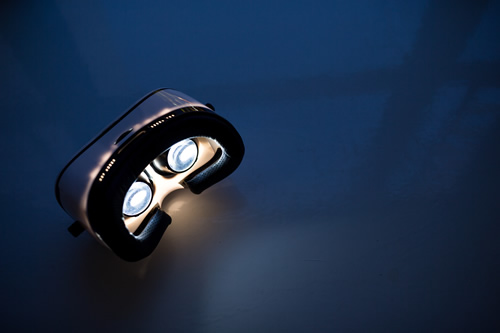In Phenix City, using AR and VR in the classroom has been an integral part of our STEM programming for the past four school years. Using engaging technology, our educators are bringing lessons and scientific applications to life for our students, exposing them to new worlds and opportunities, both academic and career.
To ensure our students are engaged and excited about our STEM programming, I frequently solicit feedback from them to learn about their experiences in the classroom. We use AR and VR lessons from zSpace, and they are consistently listed among the favorite learning experiences by our students.
Related content: 5 ways to use AR and VR in the classroom
After watching students enthusiastically embrace AR and VR in the classroom over the past four years, 10 reasons clearly emerge as to why these immersive technologies are poised to make such an impact on our students.
1. Outstanding visualizations
Located in a small Alabama town in an area with poverty levels above the national average, many Phenix City students are faced with limited opportunities. However, in our STEM classrooms — and all across Phenix City Schools — we have adopted the vision of providing the best possible experiences through quality educational technology.
Students are able to see and manipulate thousands of models, visit faraway places, and be exposed to simulations that are truly life-changing experiences. It helps to reveal to our students what is real and possible for them to achieve.
2. Curiosity and wonder
Learning with AR and VR in the classroom is a starting point for students–not the end point. With curiosity piqued in the classroom, many students report researching a topic in more depth after experiencing lessons in a virtual environment. These interactive experiences spark an interest in learning unlike what is available through a lecture or textbook.
3. Career exploration
With new jobs being created at a dizzying rate, AR and VR experiences can reveal different career opportunities and help students discover their passions, thus giving them a jump start on choosing an educational and/or career path. Using AR and VR in the classroom not only opens doors to academic pursuits and opportunities, but also delivers hands-on training through CTE programs that start career preparation even before high school graduation.
4. Engagement
Engaging with models in virtual spaces puts the student in the driver’s seat and helps to increase interest in and understanding of sometimes hard-to-conceptualize topics. With opportunities to explore deeper, manipulate virtual models in new and creative ways, and even create their own designs and experiments, AR and VR keep students engaged and focused on their learning.
5. Doesn’t seem like work
It is evident when observing students exploring and learning in AR and VR environments, they are having FUN! These immersive experiences give students the feeling of “playing” when, in fact, they are learning by exploration and discovery. It’s unlike any other classroom experience, delivering opportunities rarely available for students inside or outside of a middle or high school setting.
6. Collaboration
When students are engaged, interested, and motivated, communications between and among teachers and students is a natural progression. Students frequently explore their lessons in pairs, working together and with the teacher to explore new worlds and communicate with each other about what they’re seeing and experiencing.
7. Free to make mistakes
Operating with virtual models allows students to make mistakes, learn from them, and recover quickly without the expense or stress of restarting an actual experiment. With scientific experiments in a real vs. virtual world, students typically cannot be encouraged to make mistakes and learn from them. Virtual lessons shift this paradigm and empower the students to try new things and learn from the results, good or bad.
8. Eliminates potentially hazardous or costly experiments
Building a roller coaster or dissecting a human heart would be impossible to achieve in a middle or high school classroom, yet it is made possible through virtual models. From exposing students to human and animal bodies to exploring mechanics and robotics, VR delivers sophisticated–yet safe and cost-effective–learning experiences to students of all ages.
9. Increases critical thinking
Interacting in a virtual setting gives students the opportunity to ask “what if?” questions and create hypotheses in a constructivist manner to arrive at authentic conclusions. With models able to be manipulated to see different outcomes based on human or environmental actions, students are challenged to explore and address the causes and effects in creative new ways.
10. Promotes empathy
Virtual reality allows students to participate in cultural experiences or simulations that foster empathy and positive attitudes towards diverse groups of people or situations. Using a virtual experience that enables students to “walk a mile” in another man’s shoes help students understand different cultures and personal experiences in new and humanizing ways.
- 4 ways to encourage play in education - April 25, 2024
- CoSN IT Leader Spotlight: Lisa Higgins - April 25, 2024
- It’s time to pay student teachers - April 25, 2024

